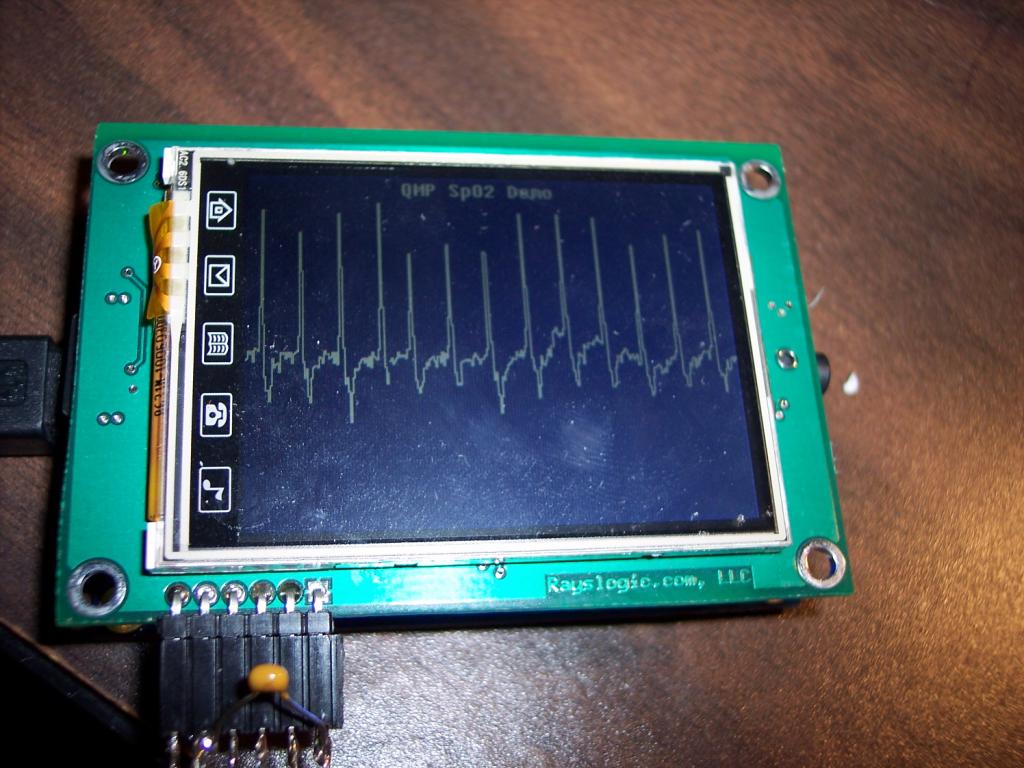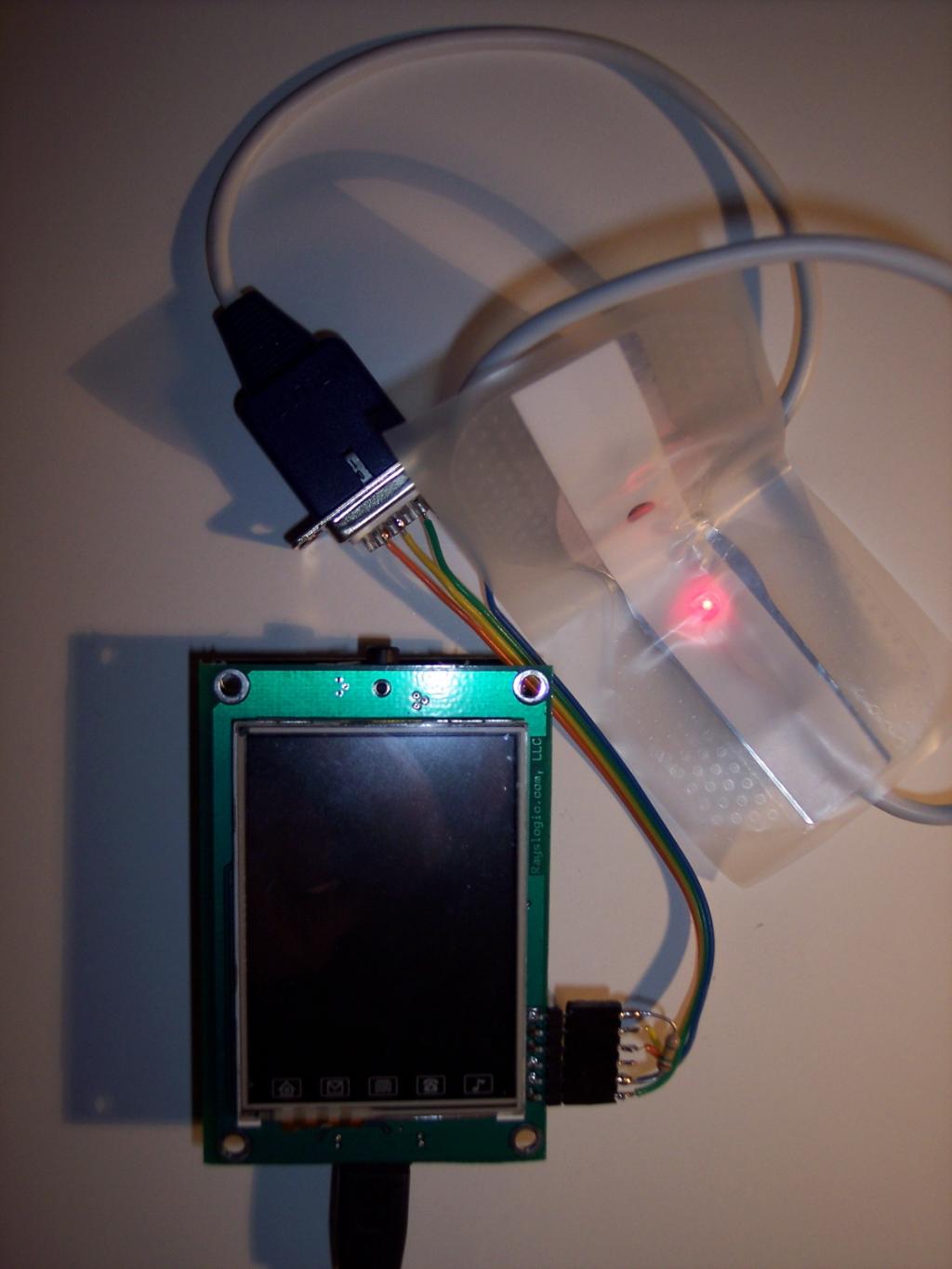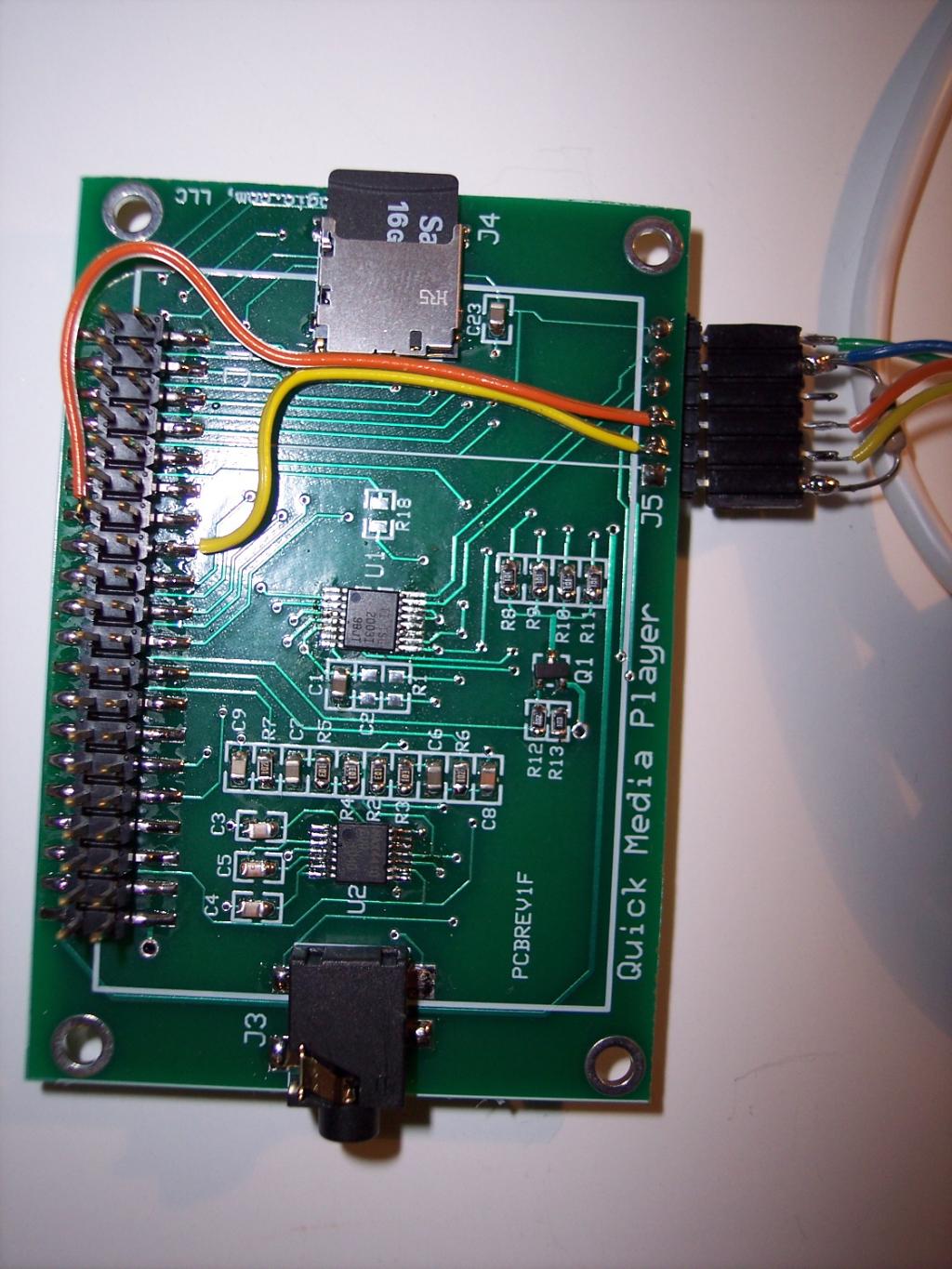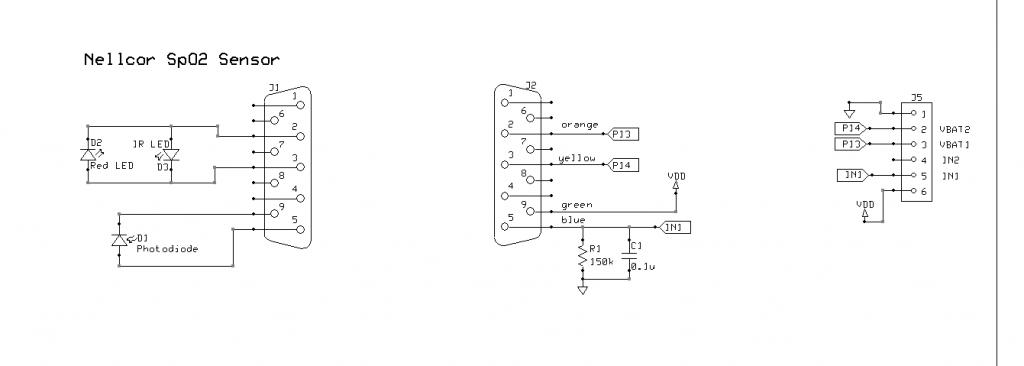PulseOx (SpO2) measurement and display with QMP
Just getting started on our MicroMedic contest stuff...
Thought I'd share some progress with a PulseOx (SpO2) sensor...
My doctor friend sent me Nellcor SpO2 sensor, which I think is the same one that
comes in the Micromedic kits.
The resistive touchscreen controller of the QMP (Quick Media Player) happens to have a few spare
analog inputs. I'm using one of them to read it 12-bit analog data from the SpO2 sensor.
Started with the Parallax code and added some extra stuff and now it seems to work pretty well:



Here's the circuit:

Here's the code:
QMP_SpO2_DEMO2 - Archive [Date 2013.03.24 Time 19.50].zip
Thought I'd share some progress with a PulseOx (SpO2) sensor...
My doctor friend sent me Nellcor SpO2 sensor, which I think is the same one that
comes in the Micromedic kits.
The resistive touchscreen controller of the QMP (Quick Media Player) happens to have a few spare
analog inputs. I'm using one of them to read it 12-bit analog data from the SpO2 sensor.
Started with the Parallax code and added some extra stuff and now it seems to work pretty well:



Here's the circuit:

Here's the code:
QMP_SpO2_DEMO2 - Archive [Date 2013.03.24 Time 19.50].zip



Comments
Hopefully you're headed into a DVI display project. This could do well in the contest!
I think I have the info, just need a calibration factor...
Was reading some things that Google turned up, but not sure how to pick the calibration factor yet...
Where did you get your SpO2 sensor? Also, the one pictured as part of the MicroMedic contest kit looks like it's intended for only a single use. Do you know where you can get the clip on ones that can be used multiple times?
Thanks,
David
Edit: Duh. I just re-read your message and you say you got yours from a friend. Anyone know a place to buy these individually?
I have no idea where to get different ones.
But, I'm testing without taking it out of it's clear plastic wrapper.
It seems to work this way, so I can test many times with the same unit.
But, you do need to keep it still when taking a measurement...
There are several Nellcor non-disposable units on eBay... Not sure if they have the same pinouts as the disposable type.
http://www.ebay.com/sch/i.html?_trksid=p2050601.m570.l1313&_nkw=UPS+Nellcor+DS-100A+Adult+Finger+Clip+Spo2+Sensor+&_sacat=0&_from=R40
dgately
The signal got bigger and noisier looking, maybe as you'd expect. Had to add a 5X division factor to get it from clipping on the screen...
This looks a little noisy to me, so I might try a bit bigger value next:
I just did the design of a "Slightly different" type of sensor for pulse-ox systems. ( I'm not allowed to say much about it ) . In the process I took apart several of the different sensors. By far, the best LED/sensor pairs were the ones in the permanent finger clip-on units. One thing to keep in mind... the data that you are working with from these things is right on the edge of "Doable" There's a lot of noise of many different types to contend with. If you take one of the "disposable" sensors apart, even there, you will see that they have a fine copper mesh noise (ground) shield around everything. Be careful to keep all the grounds, shields, etc, intact as the noise can easily overshadow the data.
http://cinc.mit.edu/current/preprints/340.pdf
That's a link to an article that I found helpful in some of my research.
I've also attached a write-up I did early in the project. I had to delete the job specific information and photos, but some of it might be helpful. You're probably beyond the point where you'll learn anything from it, but you might enjoy seeing some of my "Odd" data.
Good luck with this... I believe the Prop has the horsepower to do this and do it well, however, even with a reasonably high end (Masimo) pulse-oximeter I used for my baseline studies, ... I still got some really weird data from time to time if you get any valid data at all... you're doing good!
Ken
One thing I see is the first pdf is that they dynamically control the LED output. That's something I think I can easily add here....